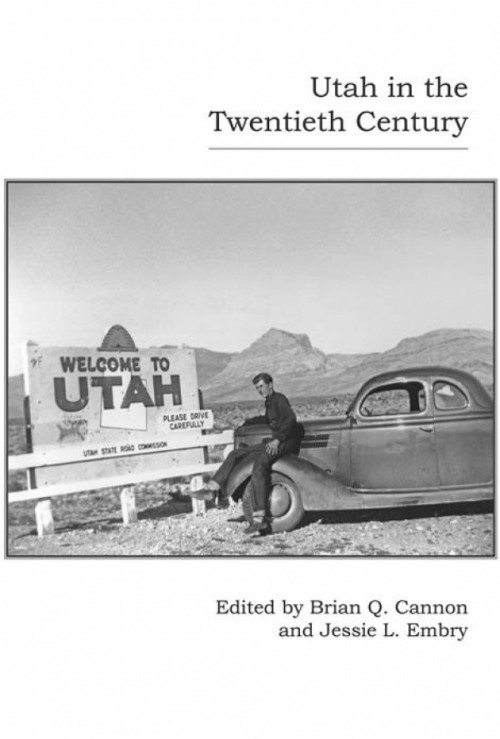Utah in the Twentieth Century
Book chronicles the state’s social and cultural transitions.
By Geoff GriffinUtah in the Twentieth Century chronicles the state’s social and cultural transitions.
The usual quick sketch of the history of Utah focuses on how a group of religious refugees showed up in the 19th century, quarreled with the federal government, eventually gave up their marital practices to join the Union and progressively went from outcast to assimilation—to the point where, in the 21st century, the state hosted an international Olympic games and has seen its population grow rapidly while becoming increasingly diverse.
However, getting from point A to point B took a whole century that usually gets left out of the Utah story—the 20th century. That was the time when the foundation for all of the changes was laid, and also the time when many of those changes took place. Utah in the Twentieth Century, edited by Brian Q. Cannon and Jessie L. Embry, gives that particular 100 years its due, with 16 different chapters by 18 academics taking a look at various aspects of what was happening in the Beehive State during that period.
The appeal of that varied structure is that the book allows for exploration into all of the nooks and crannies that might otherwise get left behind. For example, a fun chapter by Susan Sessions Rugh titled “Selling Sleep” recalls the post-war heydey of independent, family-operated motels, while also chronicling their gradual decline (the results of which can currently be seen along South State Street). Rugh writes, “Utah’s historic motels, that eventually became havens for prostitutes, drug dealers and domestic violence victims, were once beacons to weary travelers passing through Utah on Highways 40 or 89.” Another chapter recalls that the sugar beet at one time played such an important role in the state’s economy that Utah politicians were willing to create tariffs to help protect the local industry. Readers can even find out how the state’s marketing slogan went from “The Different World of Utah” to “Ski Utah” to “Utah: Life Elevated” over a period of 40 years.
Since the book is written by academics, it does a good job of tracing and documenting how the stereotypes about this place came to be. If you’ve ever looked around and thought, “A lot of Mormons seem to vote Republican,” this book provides a chapter that outlines the history of that evolution, as well as the hard data about who votes for the GOP, and the revelation that you can’t solely blame the “Mo’s” for Utah’s rightward political tilt.
However, since the book is written by academics, the non-specialist reader who simply wants a history of the state may be put off by having to wade through the sometimes cumbersome jargon and dense footnotes. While there is a great deal of information, there aren’t necessarily many stories, particularly about some of the prominent characters who made things interesting in Utah in the 1900s. The structure of the book also leaves the general reader struggling to find a common thread through the century.
If there is a theme to Utah in the Twentieth Century, it’s that the state went from being a peculiar, isolated place to something much more connected to the rest of the world, gradually becoming more homogenous along with the rest of American culture. While this was probably inevitable, there are some, even of an anti-LDS bent, who suggest that assimilation came at the price of boredom. A chapter devoted to early 20th-century writer Bernard DeVoto—no friend of the Mormons—quotes his writing that when the church abandoned the practice of polygamy, “So vanished the last energy of Utah.” He goes on to note that Mormons joined Gentiles in celebrating the “era of Good Feeling for the Sake of Business,” as a climate developed where Utahns “set profit above principle.”
In that sense, perhaps the underlying story of Utah in the Twentieth Century is the state transitioning from God to Mammon.
Utah in the Twentieth Century
Edited by Brian Q. Cannon and Jessie L. Embry Utah State University Press, 2009 412 pages, $32.95 cloth, $27.00 e-book
More by Geoff Griffin
-
A Family New Year
How to ring in 2020 with revelers of all ages.
- Dec 25, 2019
-
The 12 Arts of Christmas
A delightful dozen options for your holiday entertainment needs.
- Nov 27, 2019
-
Season Kickoff
A look at what's new, or old but great, at Utah's ski and snowboard resorts for the winter season.
- Nov 13, 2019
- More »



